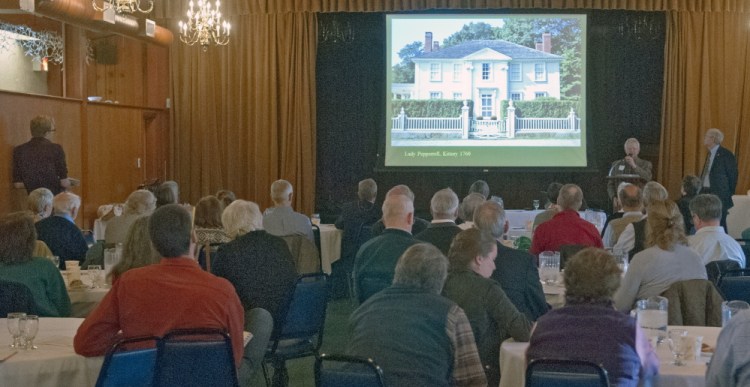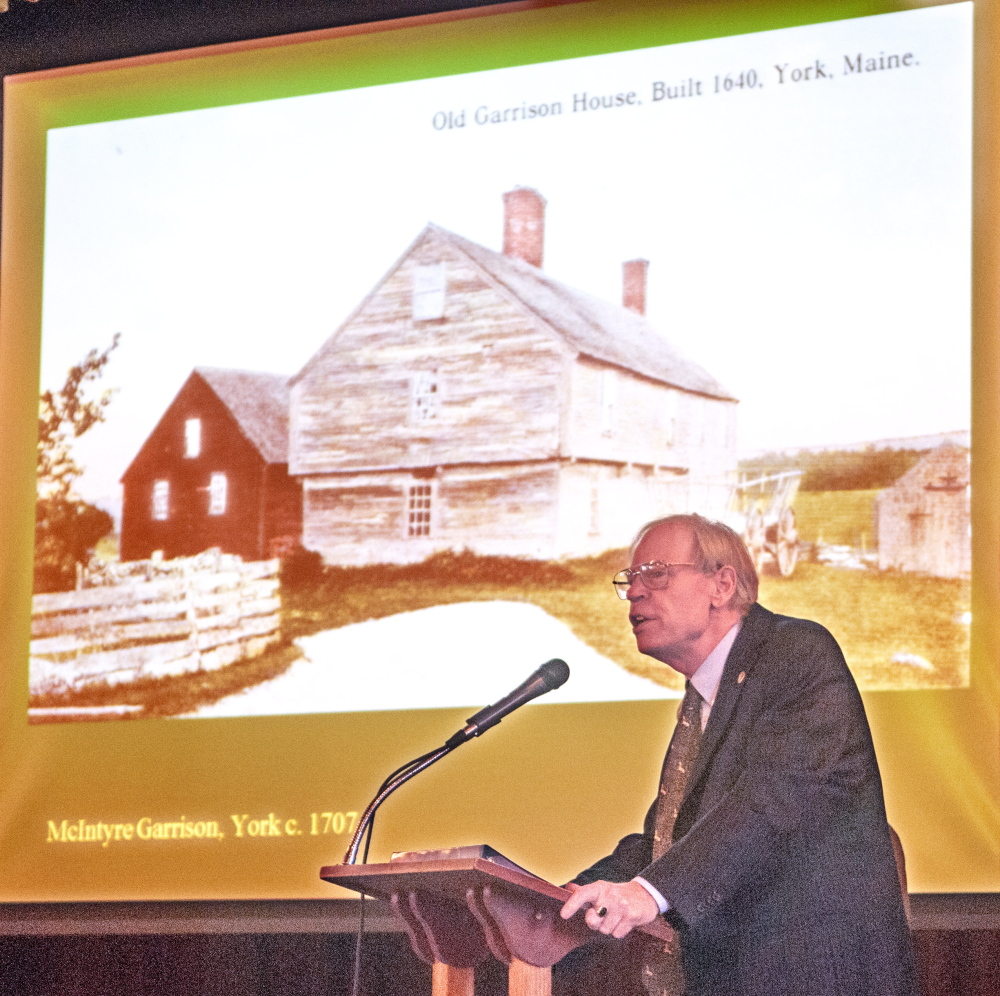AUGUSTA — Many of the state’s historic home builders borrowed from different styles of architecture, and a lot of their best work is in central Maine, experts said Saturday.
Maine State Historian Earle Shettleworth and Camden architect Christopher Glass gave a presentation of the state’s early architectural history, from the 1700s and 1800s, telling attendees at the Old House Forum at the Governor Hill Mansion how styles of homes changed with developments in world events and trends. The event was arranged by Maine Preservation, a statewide historic preservation group.
Some of the state’s earliest homes are in southern Maine, home to many of the state’s first European settlements. But the clapboard homes of the 1700s gave way to styles of homes with other European influences, such as those seen in the Georgian and Federal periods of the 1700s and 1800s, often using strict symmetry with chimneys on the sides.
Central Maine cities have many Federal-style homes from the late 1700s and early 1800s, such as the Dummer House between Water and Second streets in Hallowell. But other places in central Maine have some of the state’s best examples of homes with other European influences.
Amid resentment of British customs after the War of 1812, interest increased in the architecture and culture of ancient Greece. At times, columns were added to these Greek Revival homes; and while many of those homes were mansions designed to look like temples, columns were added to Federal homes and more modest homes too, including some in North Anson.
“So we built Greek temples, even if we’re doing worker housing in North Anson,” Glass said.
The granite, castlelike Oaklands mansion in Gardiner, built by descendants of the family that founded the city overlooking the Kennebec River, is “one of the great hallmarks of Gothic Revival country house architecture in New England,” Shettleworth said. That style, in vogue from the 1830s through the 1880s, incorporated steeply pitched roofs with gables. The Gardiner home, built in the 1830s, is an early example, made of granite.
Later homes in the area incorporated many styles, such as the Bodwell home on Hallowell’s Middle Street. Historians believe it was a Greek Revival home before being updated in the Victorian style in the 1870s with a tower and a French-inspired four-sided roof, called a mansard. However, Irv Paradis, president of Row House, a Hallowell historic preservation group, said some early homes in the city’s historic district are at risk because of neglect, including a Federal home at the corner of Academy and Middle streets and a cape on Second Street.
Row House has been urging city councilors to enact an ordinance that would allow Hallowell to fine owners who let historic buildings deteriorate enough that they aren’t protected from inclement weather. That’s targeted at Robert Dale, whom the city plans to sue to make him clean up junk left atop and around his Water Street antique shop. In April, he was arrested for failing to appear in court on an illegal-burning charge at his Fairfield store.
Paradis said while Row House’s recent focus has been on commercial property, its historic mission has been advocating for home preservation, though there’s little it can do when homes fall into disrepair.
“Every one of these homes, in my view, is irreplaceable,” he said.
Michael Shepherd — 370-7652
Twitter: @mikeshepherdme
Send questions/comments to the editors.





Success. Please wait for the page to reload. If the page does not reload within 5 seconds, please refresh the page.
Enter your email and password to access comments.
Hi, to comment on stories you must . This profile is in addition to your subscription and website login.
Already have a commenting profile? .
Invalid username/password.
Please check your email to confirm and complete your registration.
Only subscribers are eligible to post comments. Please subscribe or login first for digital access. Here’s why.
Use the form below to reset your password. When you've submitted your account email, we will send an email with a reset code.